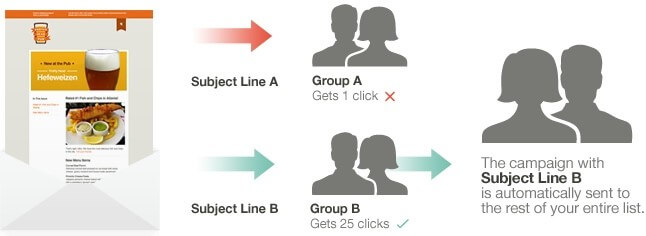Marketing professional specialising in business-to-business campaigns
View Author ProfileMarketing is a mine field: you have to do it right or you might as well not do it at all. Here are five common areas where people go wrong - and how you can put it right.
Guides
How To Solve These 5 Common Marketing Blind Spots
Marketing is a mine field: you have to do it right or you might as well not do it at all. Here are five common areas where people go wrong - and how you can put it right.

Agencies and in house marketers work day in and day out to measure their marketing’s impact.. Sometimes marketers become so engrossed in their marketing activities that they fail to analyse marketing effort against business fundamentals such as lead generation and their bottom line. Some marketers simply do not track sales back to marketing source and are not making data informed decisions.
These are known as marketing ‘blind spots’. Areas of the business which go over looked or taken for granted as the marketer or business owners have a distorted view of what they think their customers want rather than looking at the facts.
So how do you notice a ‘blind spot’ and more importantly how to do eradicate it! Here are 5 common marketing blind spots and how to solve them.
1. Not knowing where your customers come from
Marketing is a 360 degree process. The modern day consumer uses numerous devices to research purchases before committing and no marketer can assign credit to just one channel.
For example, when you are considering buying a new TV set, you may research different brands and models online, then compare prices both in-store and online, sign up for email offers or alerts and then purchase via the mobile app. This transaction involved multiple devices. Although it started with the use of search engines on a PC the transaction closed with a mobile purchase. Which channel do you attribute the sale to?
According to a study by Google, 93% of mobile phone users research purchases on their handheld device but far less actually complete the purchase online than via other means like in store, on PC, etc. They also found that consumers spent over 15 hours a week researching purchases on their mobiles!
If you are offering a subscription package, you need to know who to advertise to and how to advertise it, which is why a SaaS marketing strategy needs to be a part of what you can offer to your customers. When you understand where your audience is, you will be able to offer them better than anything if you hadn't done the research. The whole point is to get to know your customers, understand where they come from and where you can help them.
If you know that, you're going to be able to offer them something that no one else can! Not doing the research about where your customers come from is going to be a big deal in your business and you won't get too far with getting the word out about how amazing your business is. Don't be afraid to look beyond the norm; your customers are out there, you just have to find them!
For this reason it is vital to introduce multi-channel or cross device tracking. This allows the marketer a full view of the consumer’s journey into the buying funnel. Without this no brand can truly understand where their customers are coming from and what marketing strategy or channel is really working the hardest for them.
You may ask why you need this information. Other than to find out how and where your consumers are finding out information about your business. Well, it is vital that this contributes to your strategy. You may find you have plenty of consumers in the funnel but none committing to buy. Perhaps they need a special offer email to push them into a purchase, or they could be stuck at a certain problem page on the site. Without the initial research how would you know?
2. Thinking you do not need to pre-test or re-test
Digital marketing is a fast paced industry sector. You may be mistaken into thinking you do not have time to test your marketing efforts before launch.
Testing is vital to your marketing. Often I hear how a company has built an ecommerce web store but failed to make sales, or developed a digital email campaign UK wide only to find it resulted in no new purchases. Implementing an action is not enough; you need to test your audience reaction.
"It is easy to get bogged down in data with the new metrics tools available to marketers"
It may be that the website or email is not attracting people, the right kind of people to buy or the website is causing a large barrier in the sales funnel.
Testing your new marketing strategy and initiative can take time and money but in the long run the rewards are well worth it. Tools like split testing are perfect for tracking how effective a campaign is or will be. Simply devise two versions of your campaign and test on a small audience. For example: changing the message line between to email shots and seeing which has a better open rate. This is sometimes known as A/B testing.

Split your audience and try a couple of approaches. Stick with the best response. Source
3. Chasing the wrong leads
Why do sales people prefer telephone calls over email leads?
Because they are more likely to convert that’s why.
No, it’s not a joke, telephone leads are 10-15 times more likely to convert than email leads. Why? Because when you ask the consumer to complete a form online, they then have a cooling off period, a chance to change their mind and research other options, something that you do not get when you are on the telephone. Telephone leads provide a captive audience. So why are they are not harnessed as much as online leads?
Inevitably the telephone leads will come from some form of marketing. Using applications like call tracking from Mediahawk are perfect for gathering this type of data. They can apply a custom telephone number to your website pages on both PC and mobile.
The user can then be tracked through the website from the original source. Perhaps your consumer clicks on your Google Ad, they are then assigned a tracked number which can be monitored as the viewer takes a journey through your website. When the individual calls you can then see where they first found your site, through to what items they have looked at.
The key point here it to integrate your leads and not treat them as separate entities. You may find at present you log email, telephone, website and in-store leads all separately. However it is likely that the lead has interacted with more than one form of media in their journey to you and more if they are purchasing.
4. Thinking that more data is better than less
It is easy to get bogged down in data with the new metrics tools available to marketers. It seems we can measure literally everything including open rates, page views, time of page, sources, likes, shares, re-tweets and more. Although it is important to review success in your campaigns its equally important not to get to caught up in ‘data overload’.
Define some key performance metrics (KPIs). These can be simple like the number of users who reach the ‘order submitted’ page online via mobile or desktop. Take a look at your main objectives and find one key metric that will tell you if this is a success of failure. You can then cross these key metrics over with other objectives such as number of sales vs. revenue.
5. Not understanding the consumer perception of your brand
This is sometimes known as ‘brand blind’. Simply put, the marketer knows the brand inside out and assumes everyone else does the same. Sometimes brand perception can change and this goes un- noticed by marketers and business owners over time.
You may have plenty of likes, shares, re-tweets and followers which are known as behavioural metrics, they demonstrate how consumers behave with your brand. What is missing is ‘attitudinal metrics’ which is brand awareness, associations and purchase intent. In other words is your brand persona the right message!
No behavioural metric measures brand impact, communication of the brand message or long term associates. These can only be gained by in-depth analysis of attitudinal metrics of consumers. Focus groups and surveys are a handy means of finding out your brand message as perceived by your audience.
Every business is different and inevitably some will have more blind spots than others. These five are the most common and probably the easiest to overcome once recognised. Marketing is not just about pushing content to your audience it involves research and targeting as well.
Most read in Guides
Trending articles on Guides
Top articles on Minutehack
Thanks for signing up to Minutehack alerts.
Brilliant editorials heading your way soon.
Okay, Thanks!


